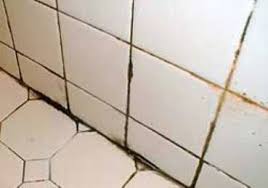 Our last post discussed how to prevent mildew and mold forming in bathrooms on shower tiles. This focuses on how to remove mildew from tiles in showers once it has formed. The first recommendation is to keep your shower clean and dry if you want to avoid mildew and mold in the first place. Once it has formed, you will need strong cleaners to remove the stains. There are many products on the market. Some work, some do not. We are not recommending any one particular product. Vinegar works well as does bleach, however you need lots of ventilation and protective gloves. Be careful of your clothes as well to avoid stains from the bleach.
Our last post discussed how to prevent mildew and mold forming in bathrooms on shower tiles. This focuses on how to remove mildew from tiles in showers once it has formed. The first recommendation is to keep your shower clean and dry if you want to avoid mildew and mold in the first place. Once it has formed, you will need strong cleaners to remove the stains. There are many products on the market. Some work, some do not. We are not recommending any one particular product. Vinegar works well as does bleach, however you need lots of ventilation and protective gloves. Be careful of your clothes as well to avoid stains from the bleach.
Remove Mildew From Tiles in Showers
This picture clearly shows lots of mold on the grout. Consumers need to remove all soap scum, calcium stains etc from the tiles. It is going to take some time and elbow grease to remove the stains. Using bleach or vinegar, spray the tiles, let it soak for awhile and then scrub the tiles. Wash with water. Repeat the process until the tiles are clean.
The soap scum on the grout is much more difficult to remove. Scrubbing and application of vinegar will remove the surface material. If the grout was not sealed in the first place, the soap scum will come off. A high pressure steam cleaner can be used to clean the grout as well. This works well although again your need to use a lot of elbow grease to clean the grout.
The worst case solution is to use a grout removal tool to get all of the grout material out of the joints. Re grout the joints and seal the grout joints.
Once you have your shower tiles nice and clean follow the steps outlined in the previous post to prevent further damage from mold and mildew. Keep your shower walls dry and clean your shower every two weeks.